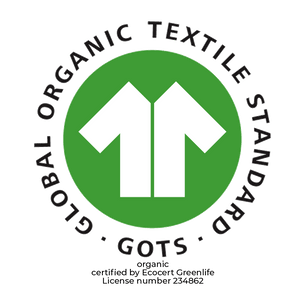
Cotton is one of the most important natural fibers in the world. However, there are significant differences between organic and conventional cotton—especially in terms of cultivation, environmental impact, and fiber quality.
Cotton for a healthy ecosystem
In controlled organic farming (kbA), synthetic pesticides, insecticides, and chemical fertilizers are prohibited. Instead, natural methods such as crop rotation, mixed cropping, and beneficial organisms are used to control pests and keep the soil vibrant. This promotes healthy ecosystems and thus biodiversity.
A crucial point is the seed. Genetically modified organisms (GMOs) are fundamentally excluded from organic cotton. In contrast, conventional farming often uses GMO cotton, which is genetically modified to produce an insecticide. While this may reduce the use of pesticides in the short term, in the long term it leads to pest resistance, a decline in biodiversity, and dependence on patented seeds from large corporations. Organic cotton, on the other hand, uses natural, open-pollinated varieties that are adapted to local conditions and can be propagated independently. This allows farmers to remain independent and preserves diversity in the fields.
LangerChen consciously uses organic cotton because it supports natural cycles, protects soils, and creates long-term sustainable structures.
Where is organic cotton grown?
The largest organic cotton-growing regions are India, Turkey, China, Tanzania, and the USA. When selecting its partners, LangerChen not only considers the origin but also adheres to strict environmental and social standards throughout the entire supply chain. Through close collaboration with certified spinning and weaving mills, LangerChen ensures that the quality of the organic fibers is maintained from harvest to finished fabric.

Transparent standards for the environment and quality
Cotton generally requires a lot of water. The difference lies in the method: Organic cotton is predominantly rain-irrigated, which significantly reduces water consumption. Furthermore, humus-rich soils in organic farming improve water retention capacity. This means rainwater is better absorbed and retained longer. In contrast, conventional monocultures often rely on artificial irrigation, which depletes groundwater reserves and can release chemical residues into the environment.
LangerChen also places great emphasis on environmentally friendly processes in its further processing. From ginning to spinning and weaving to dyeing, only low-pollutant processes are used. This is where the Global Organic Textile Standard (GOTS), the leading standard for organic cotton textiles, comes into play.
GOTS stipulates:
- No use of genetically modified seeds.
- Ban on dangerous chemicals and heavy metals.
- Wastewater treatment in all wet operations.
- Social standards according to the standards of the International Labour Organization (ILO).
- Complete traceability throughout the entire supply chain.
LangerChen consciously uses organic cotton because it supports natural cycles, protects soils, and creates long-term sustainable structures.
For consumers, this means: If a LangerChen product is made from GOTS-certified organic cotton, it meets the highest ecological and social standards. The material remains soft, skin-friendly, and free of residues – ideal for sustainable fashion with style and responsibility.
LangerChen stands for high-quality clothing made from organic cotton that combines ecological responsibility, quality, and timeless design. By consciously avoiding chemicals and genetic engineering, a product is created that harmonizes the environment, people, and fashion.




